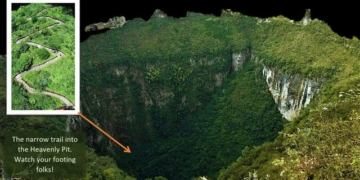Researchers have claimed that an inscription on a 1,100-year-old breastplate found in a ruined fortress in Bulgaria may contain one of the earliest known examples of Cyrillic script.
Ivailo Kanev, an archaeologist at the National Museum of Bulgaria and the leader of the excavation team at the fortress, located on the border between Greece and Bulgaria, stated: “The writing is inscribed on a lead plate worn on the chest to protect the wearer from trouble and ward off evil spirits.”

An inscription dated 1,100 years ago found on a breastplate excavated from the ruins of a Bulgarian fortress may represent one of the oldest Cyrillic texts ever discovered.
Kanev noted that the inscription mentions two individuals named Pavel and Dimitar.
Kanev remarked: “It is unclear who the individuals requesting Pavel and Dimitar were, but it is very likely that Dimitar was stationed, settled in the fortress, and was a relative of Pavel.”
Kanev indicated that the inscription dates back to the time of Tsar Simeon I (also known as Simeon the Great), who ruled the Bulgarian Empire from 893 to 927. During this period, the tsar expanded the empire and launched military campaigns against the Byzantine Empire.
One of the Oldest Cyrillic Texts?
The Cyrillic script, used in Russian and various other languages across Eurasia, was developed during the medieval period.
Based on the way the letters are inscribed and the location of the inscription within the fortress, Kanev believes that it may have been placed there between 916 and 927 by a Bulgarian military unit.
Before this discovery, the earliest surviving Cyrillic texts were dated to 921. Therefore, this newly discovered inscription is among the oldest Cyrillic texts ever found.
Kanev mentioned that he plans to publish a detailed description of the inscription and the fortress in the future.
A researcher not involved in the excavation stated that this is an important discovery that warrants attention but requires caution.
Yavor Miltenov, a researcher at the Bulgarian Language Institute of the Bulgarian Academy of Sciences, remarked: “We will need to see the full publication of the inscription and the context in which it was found before we can be certain about its dating.”




















































